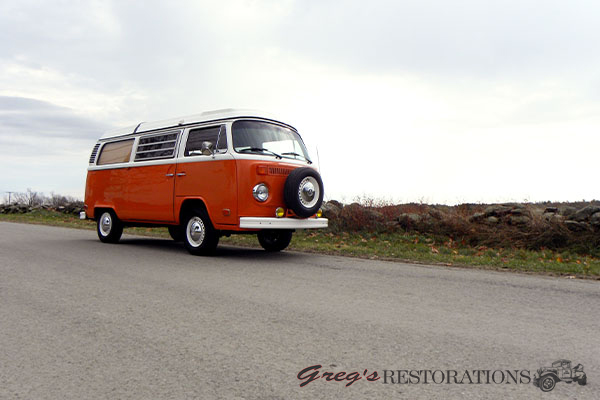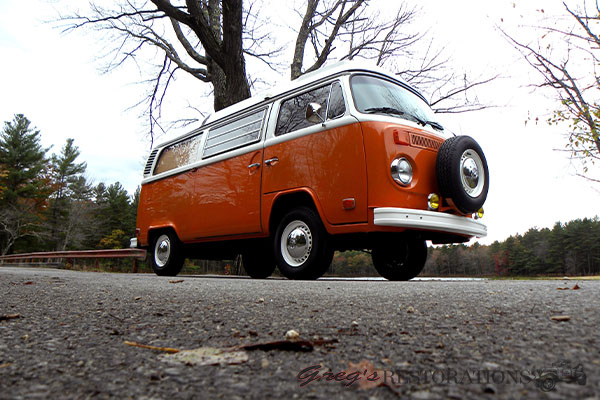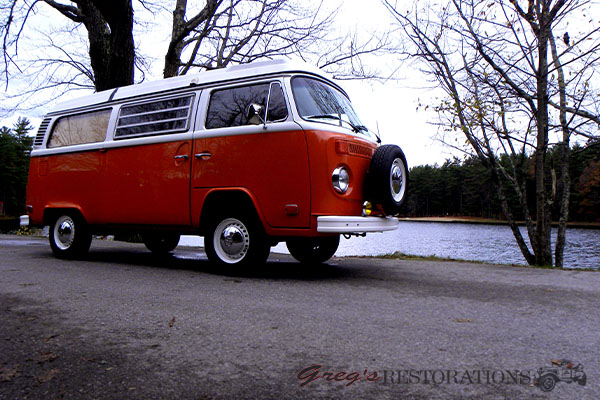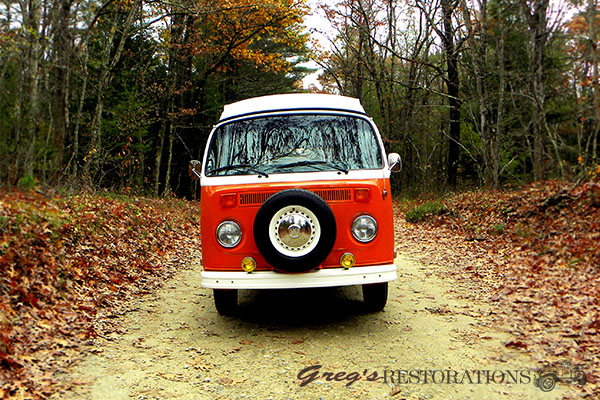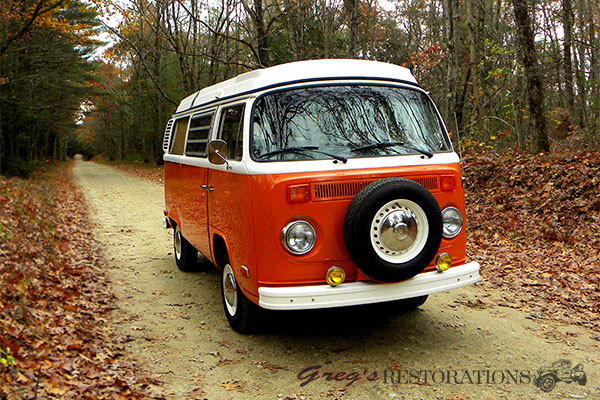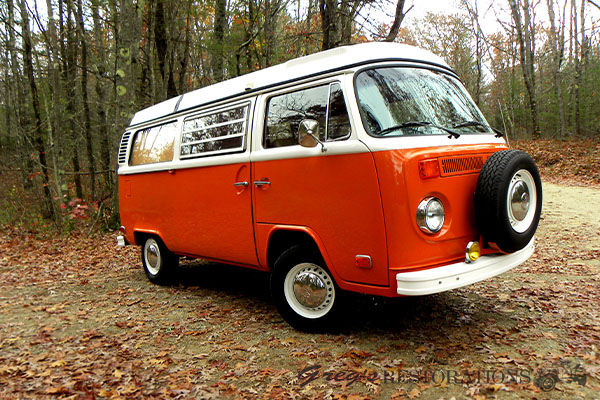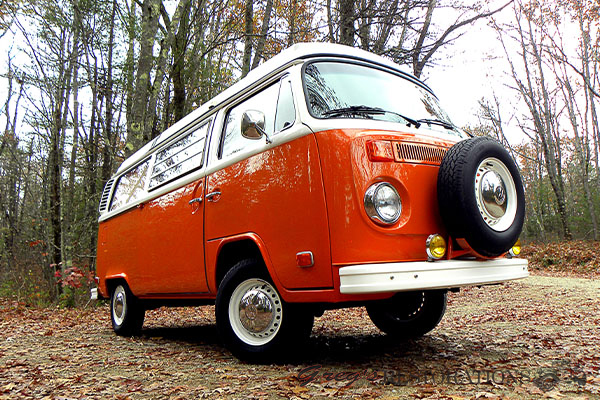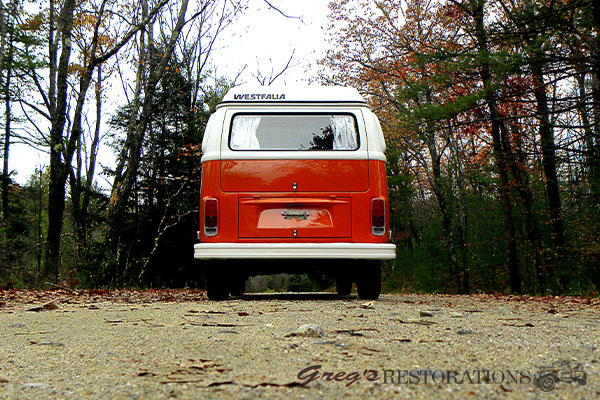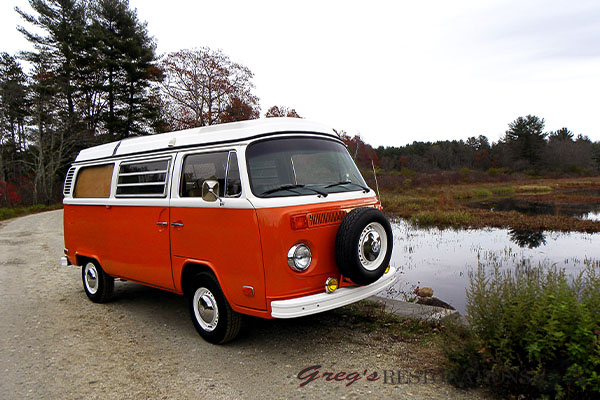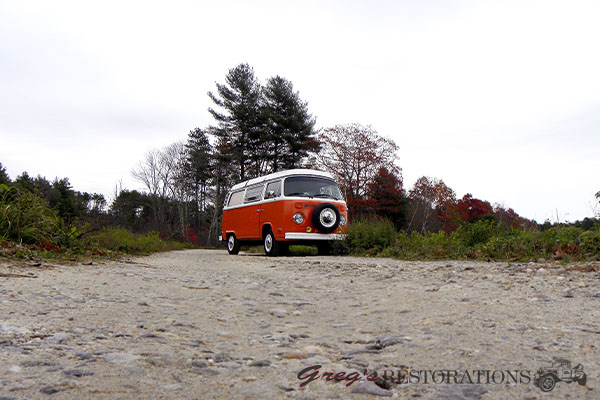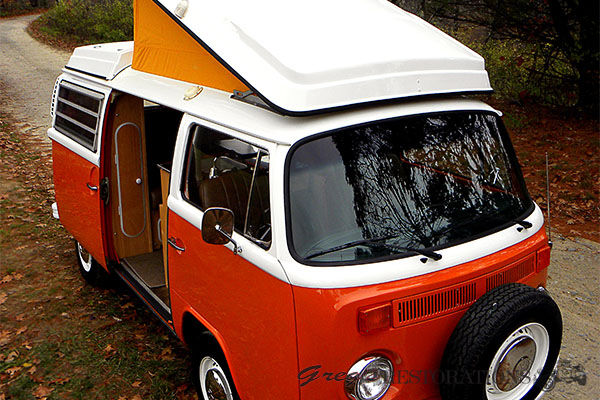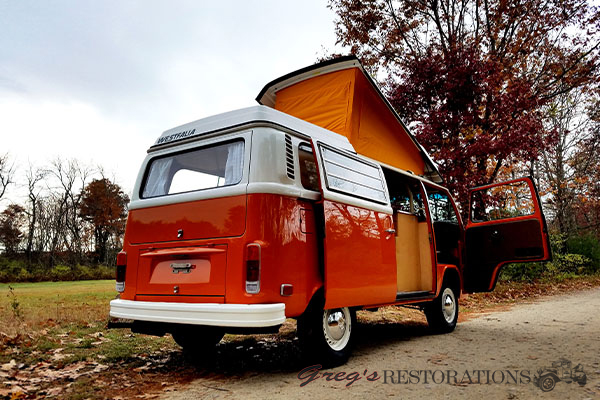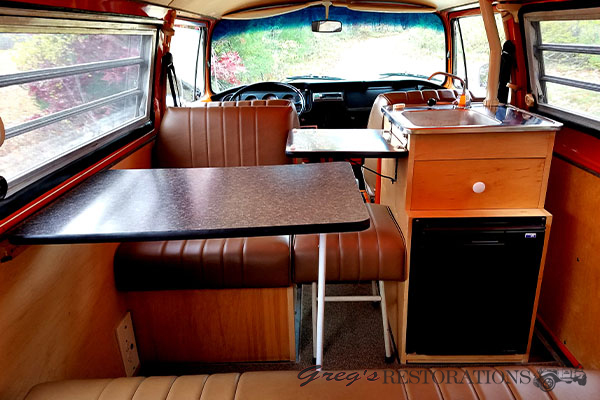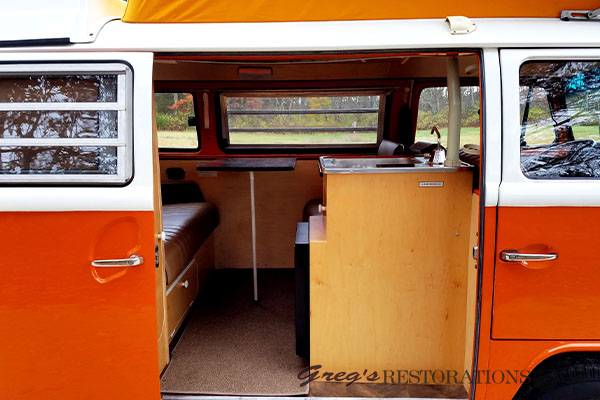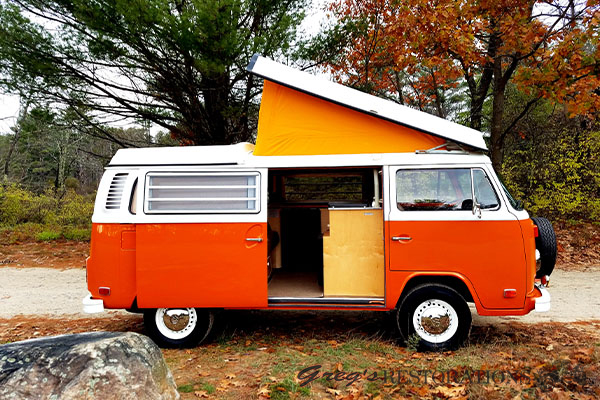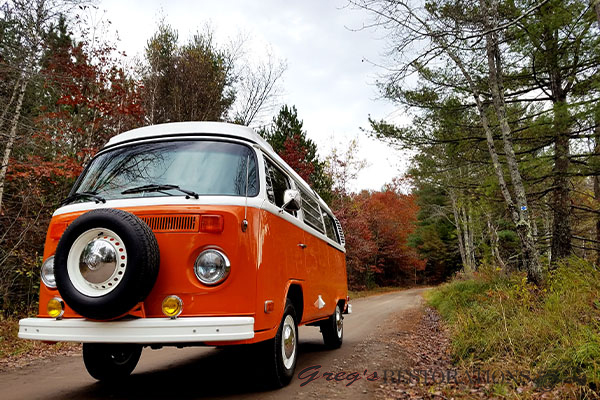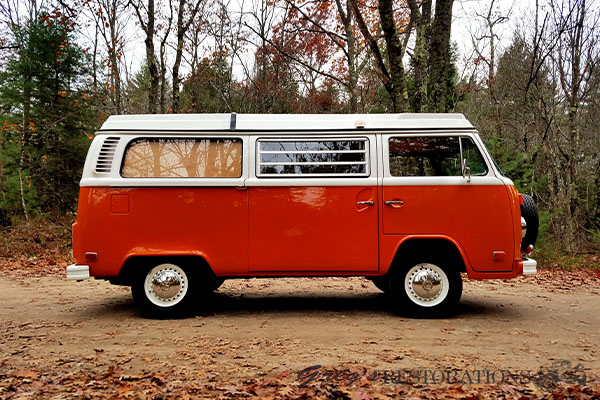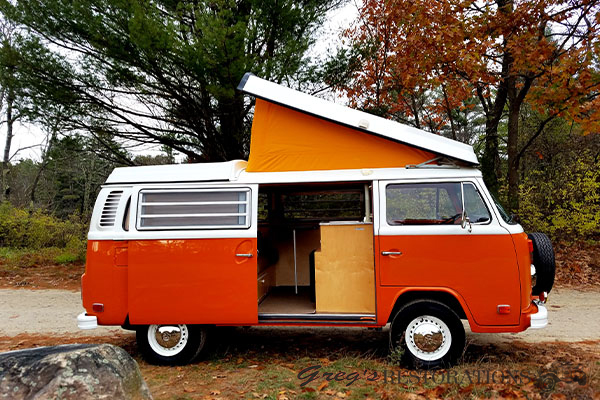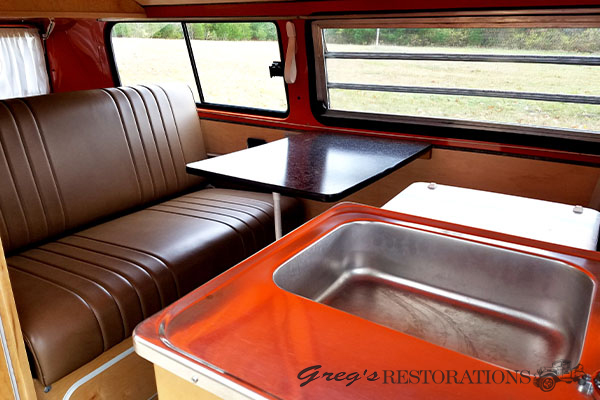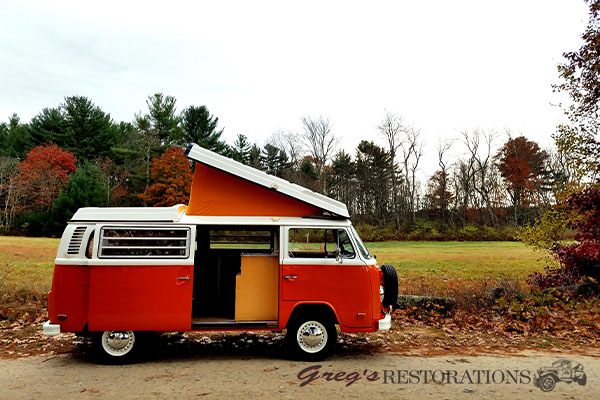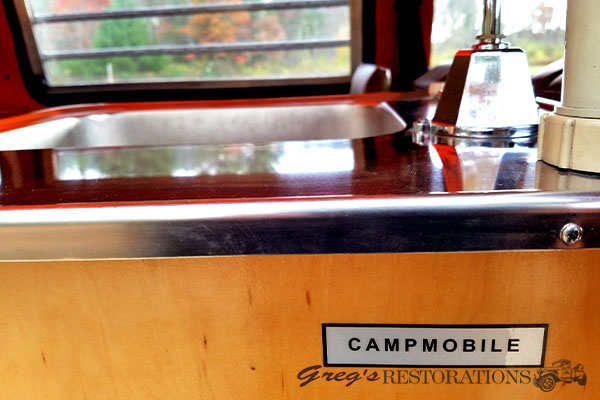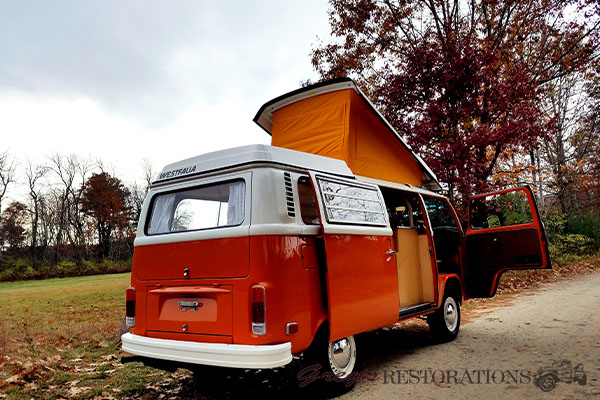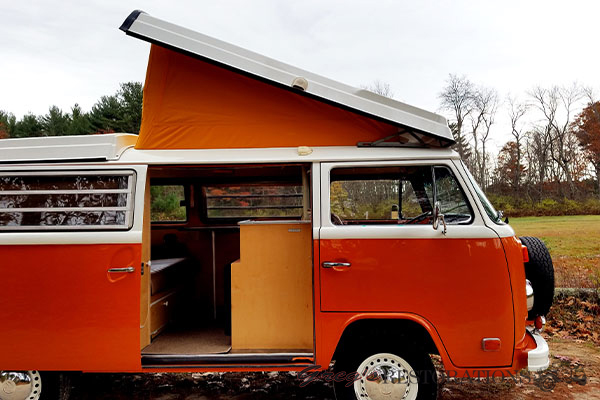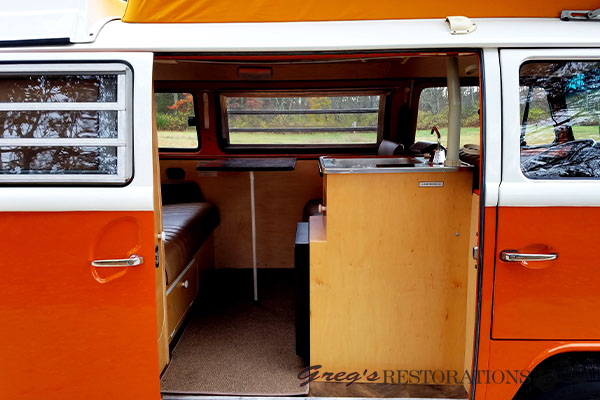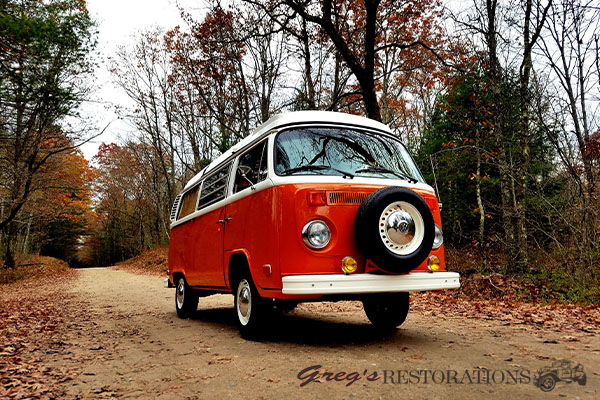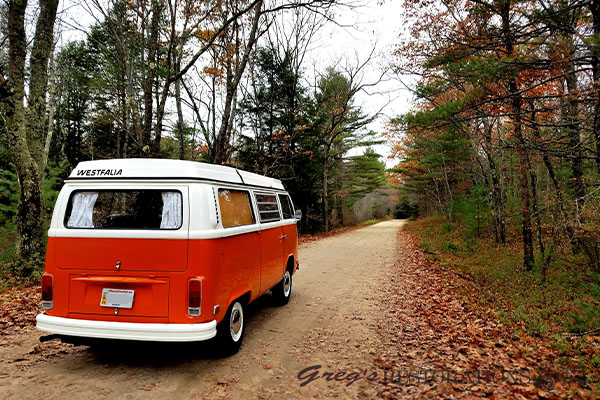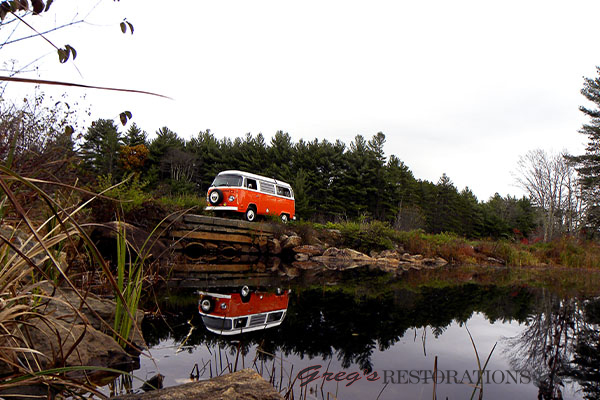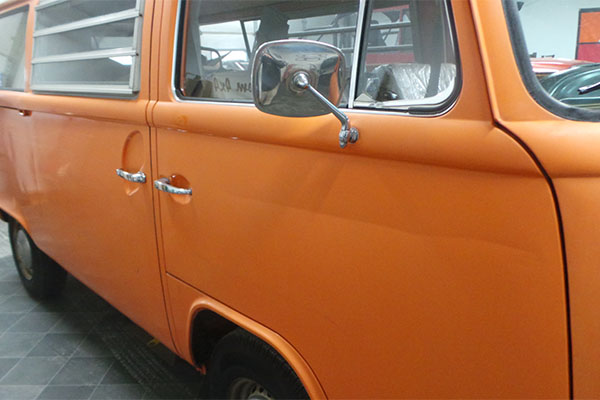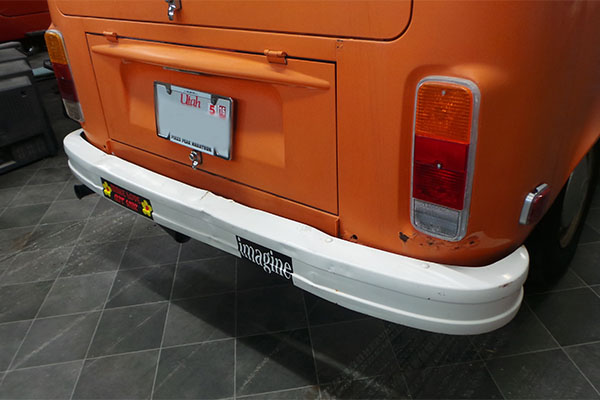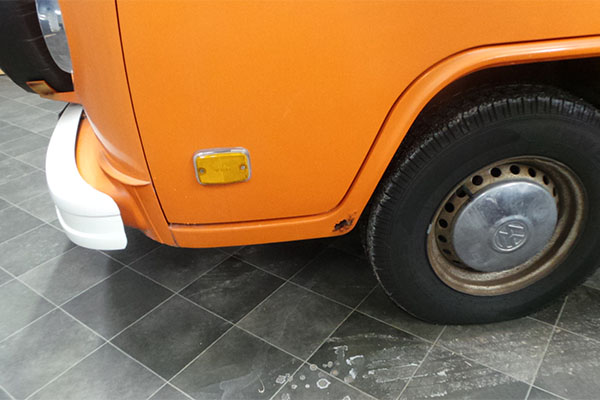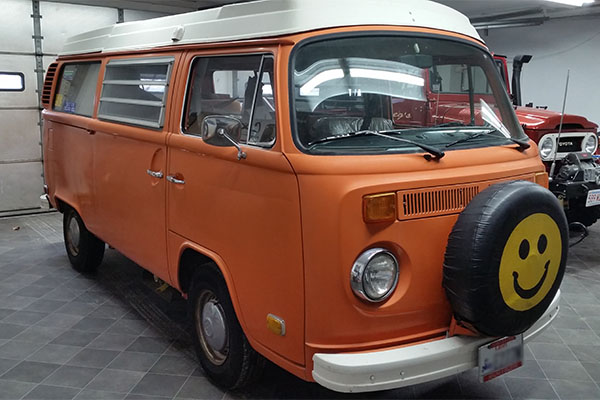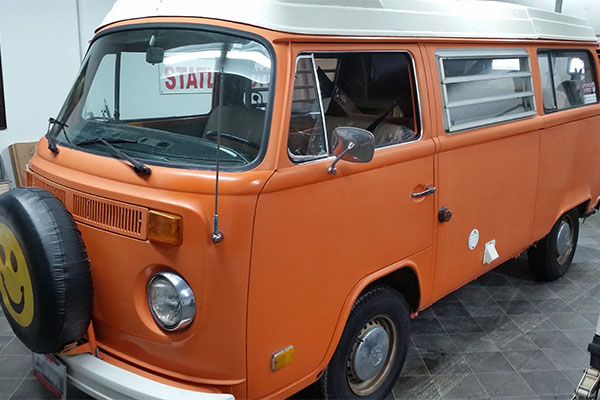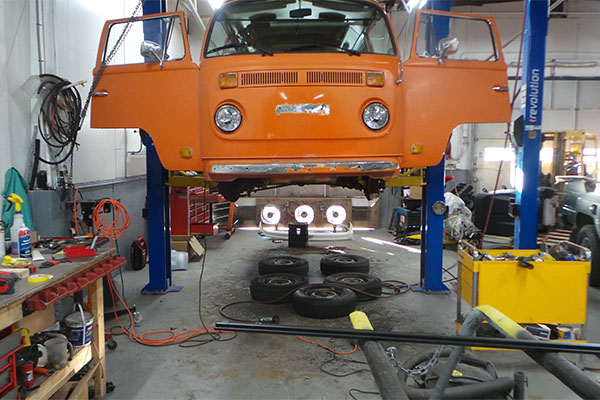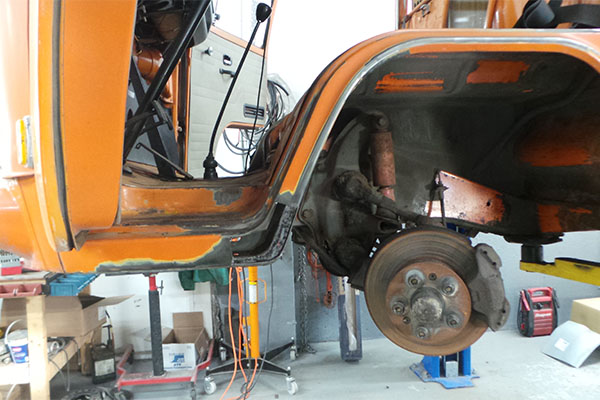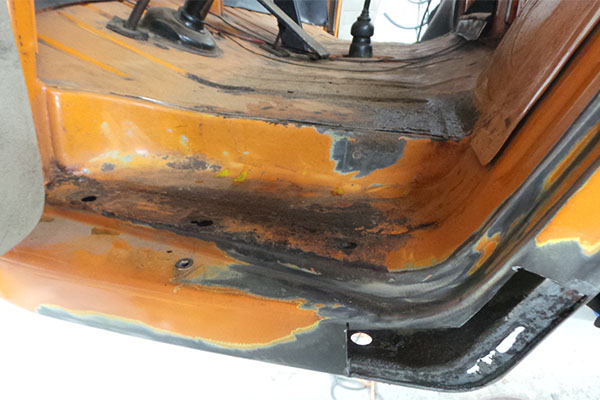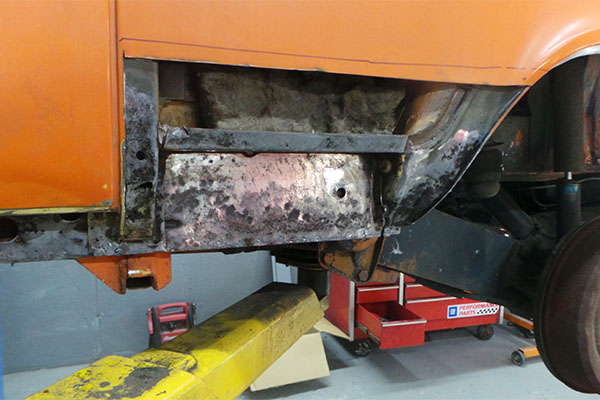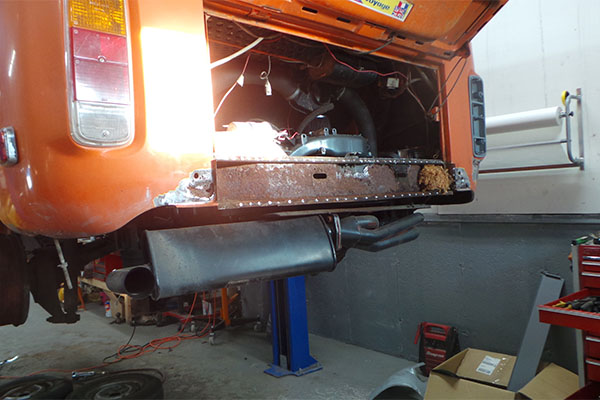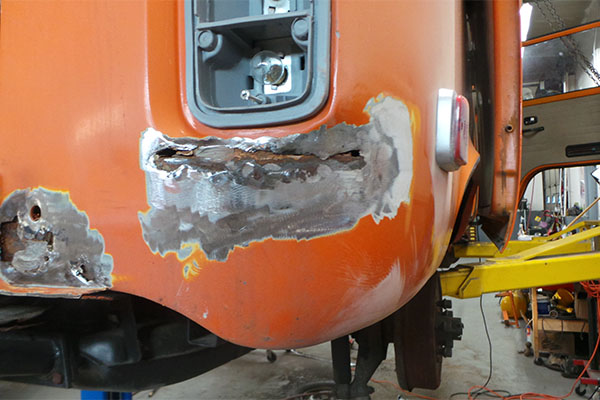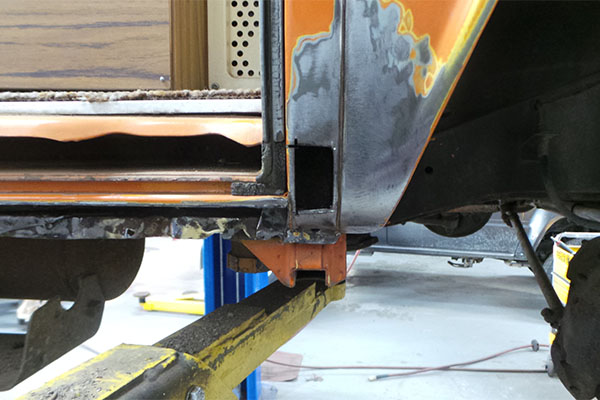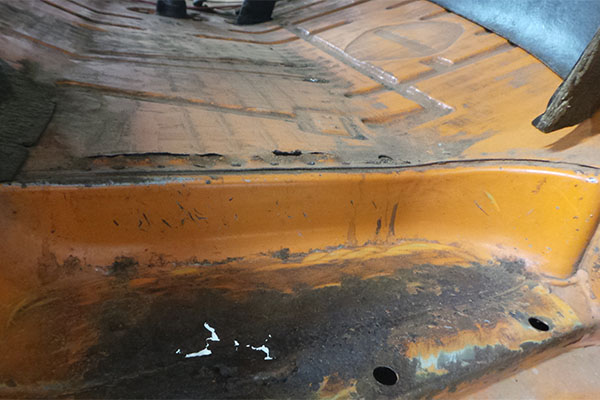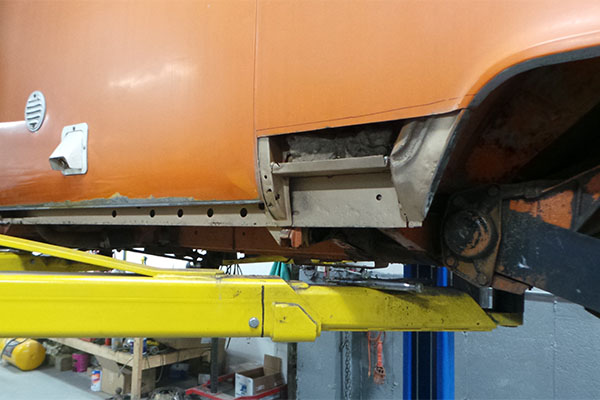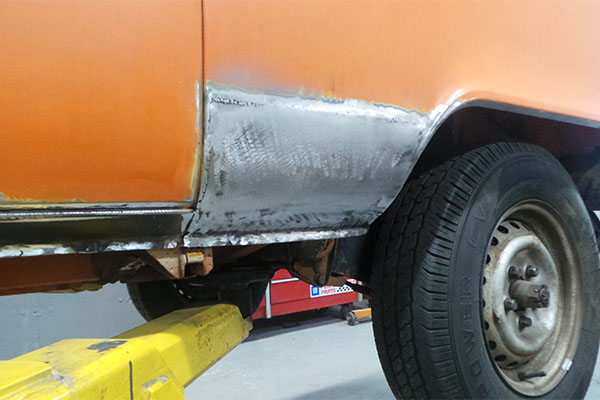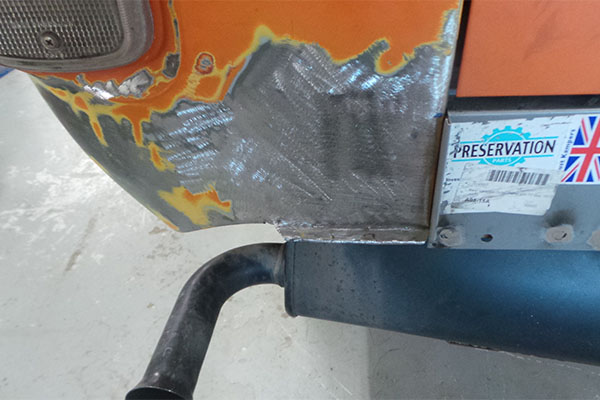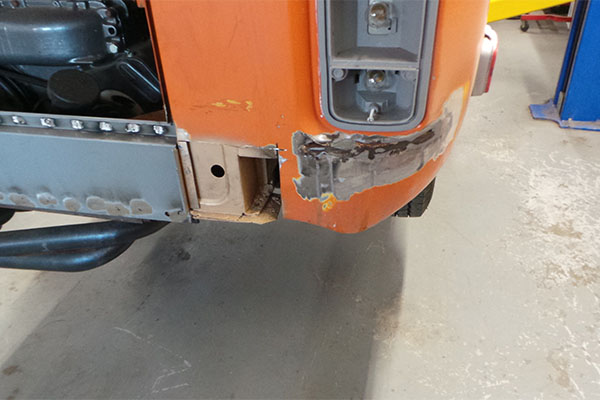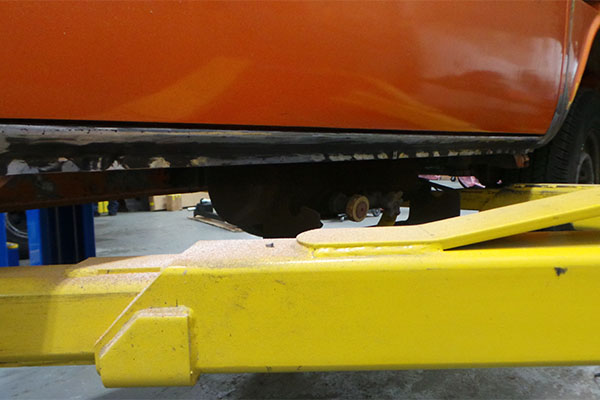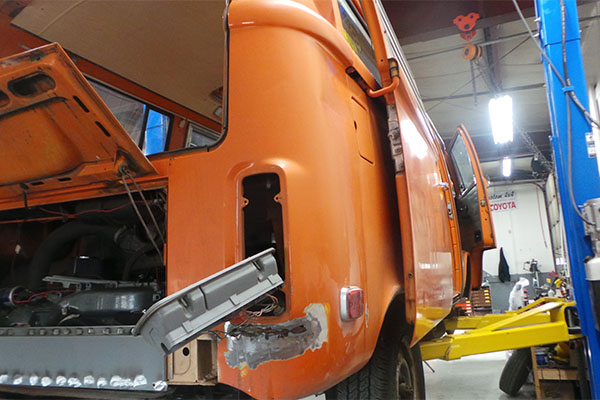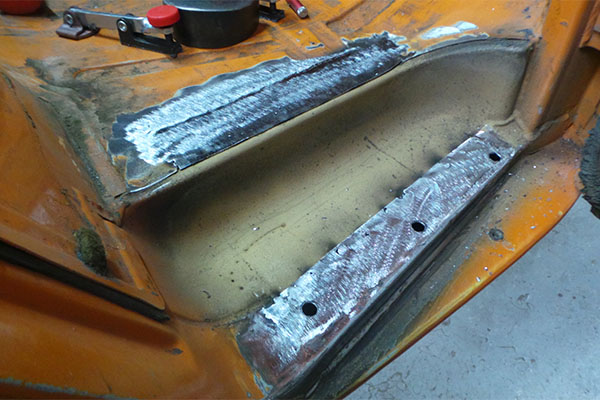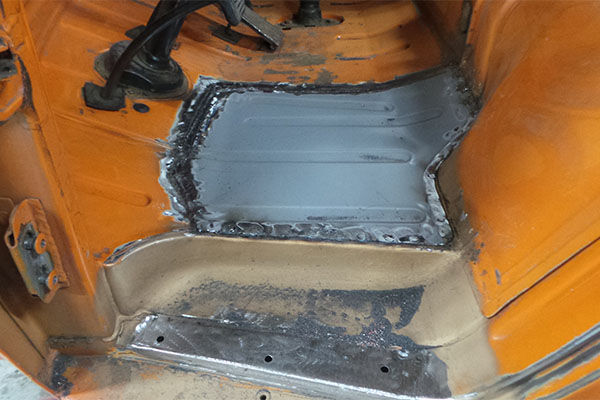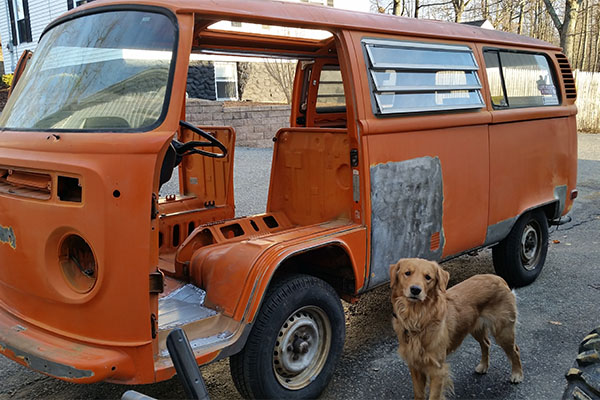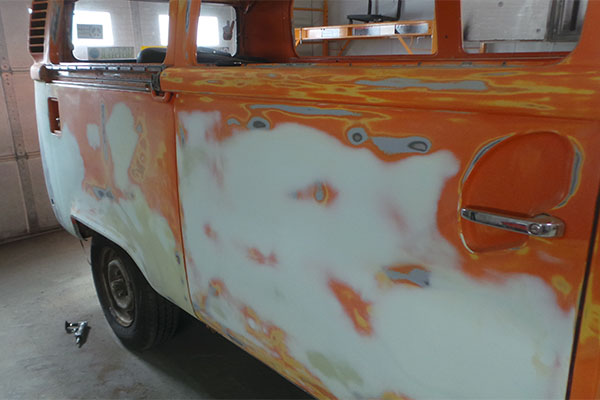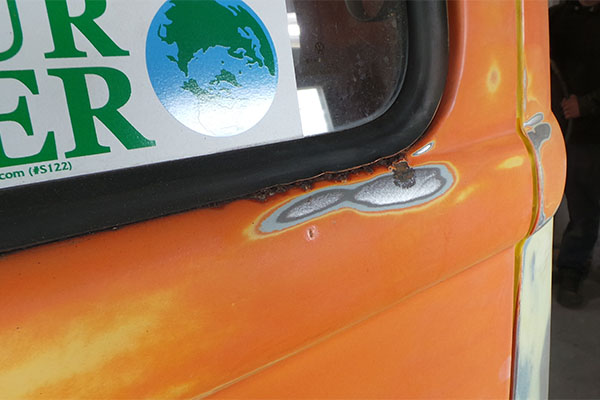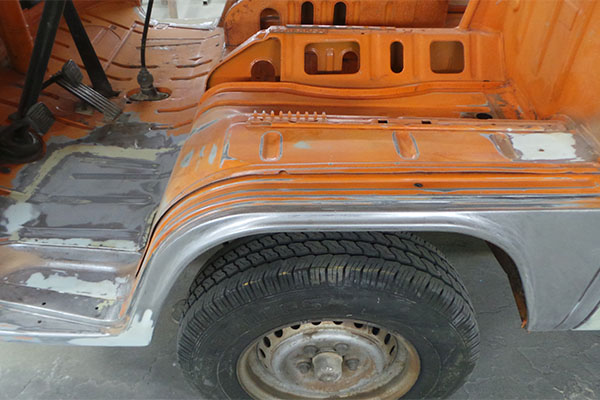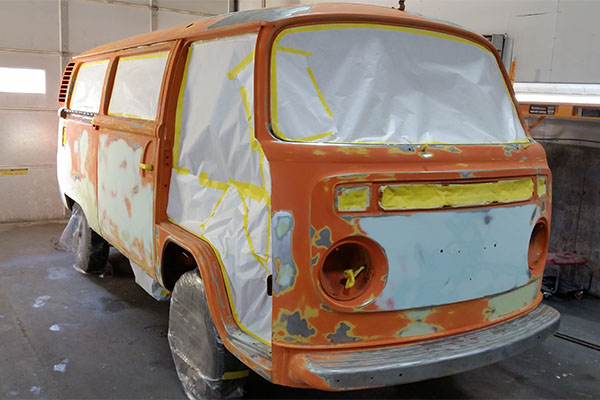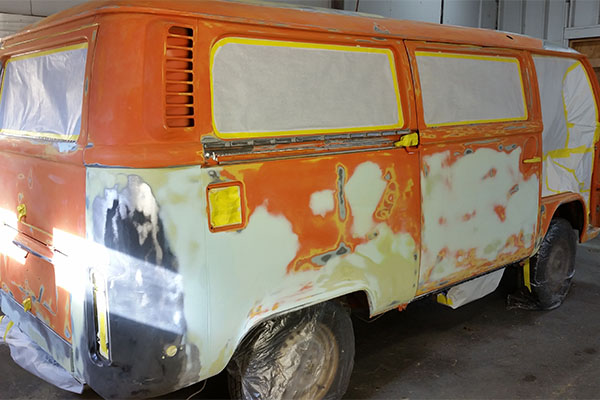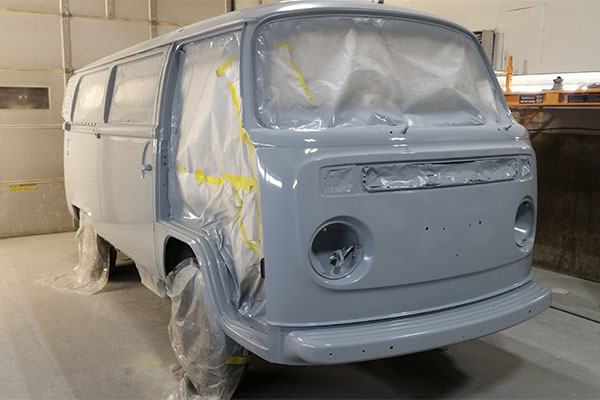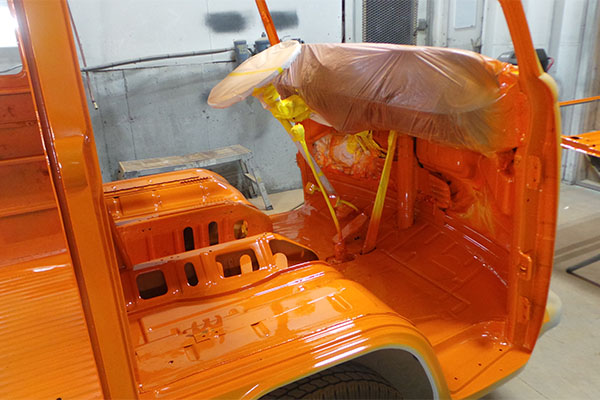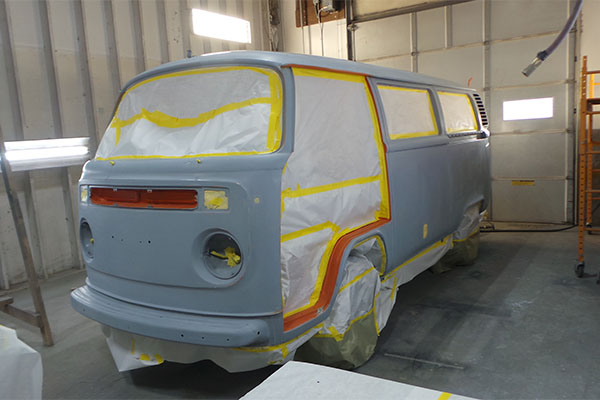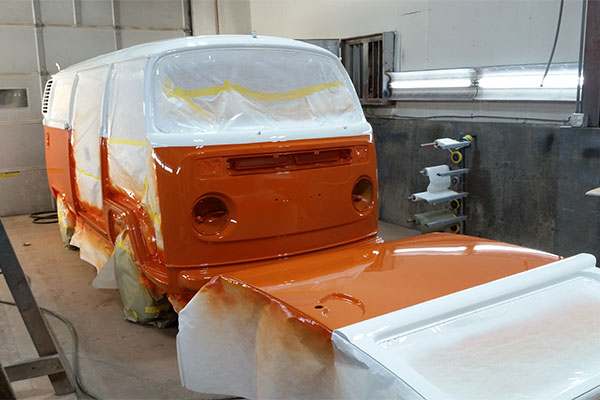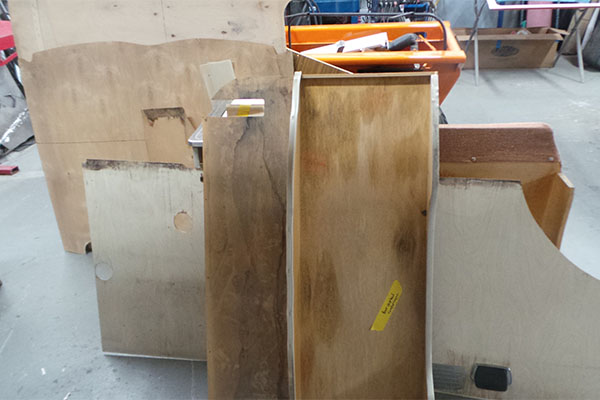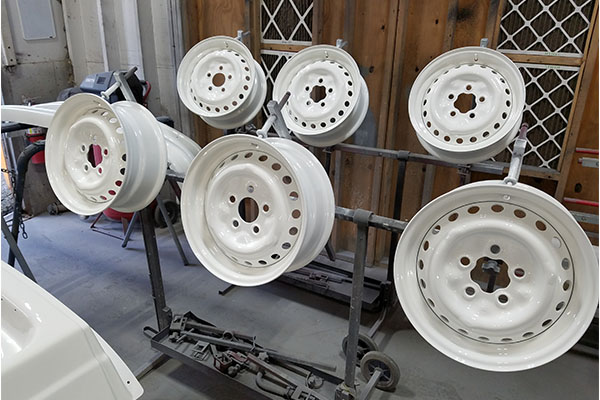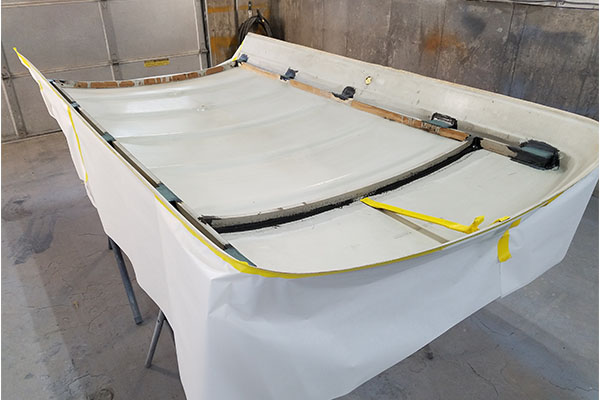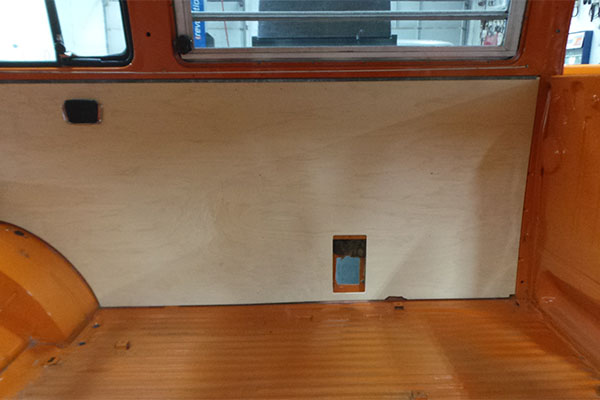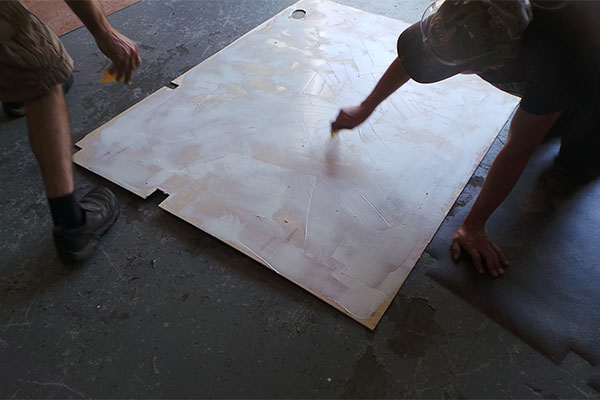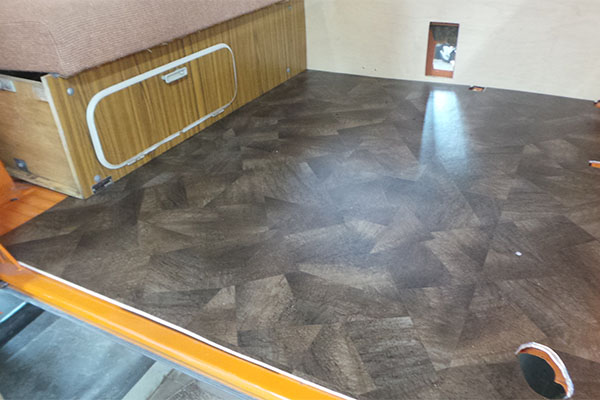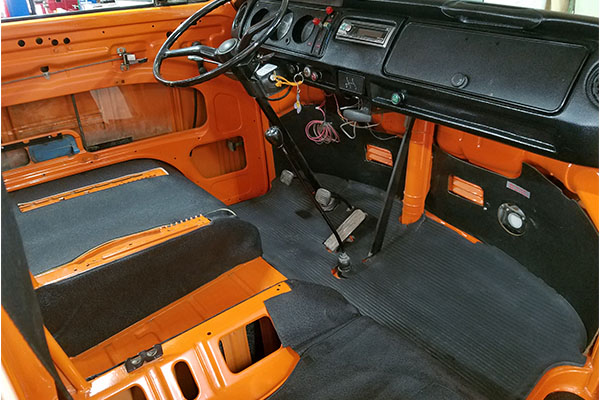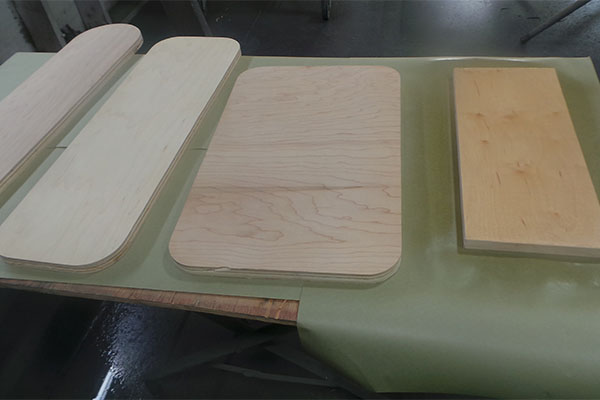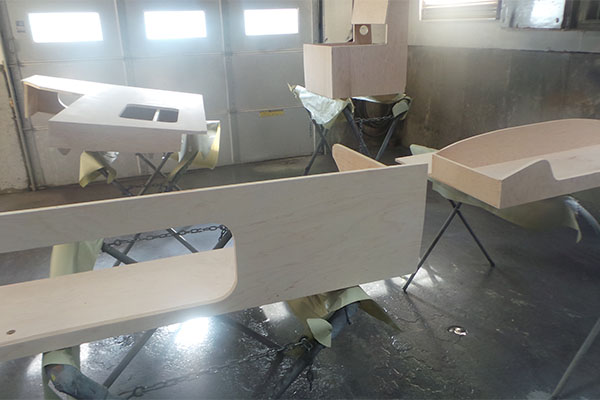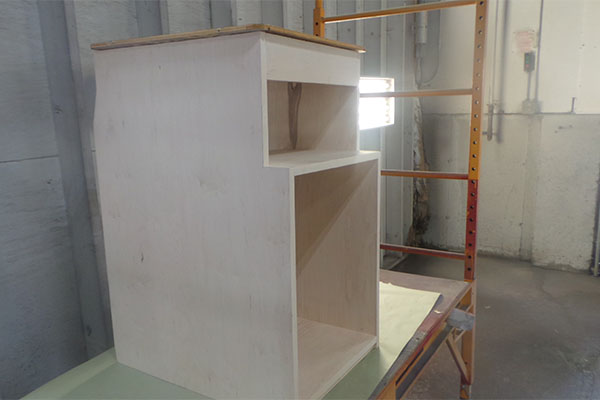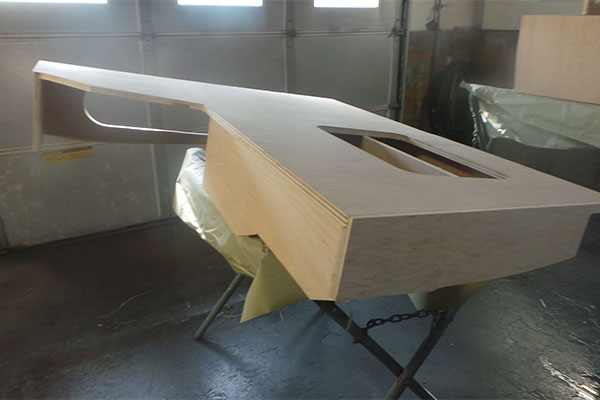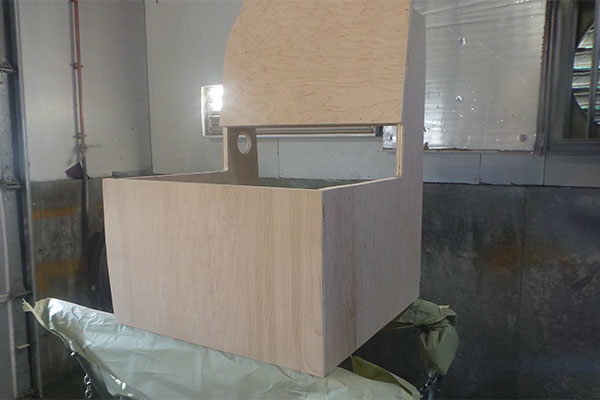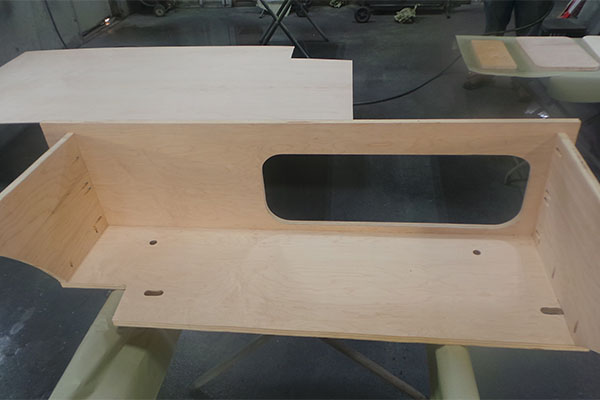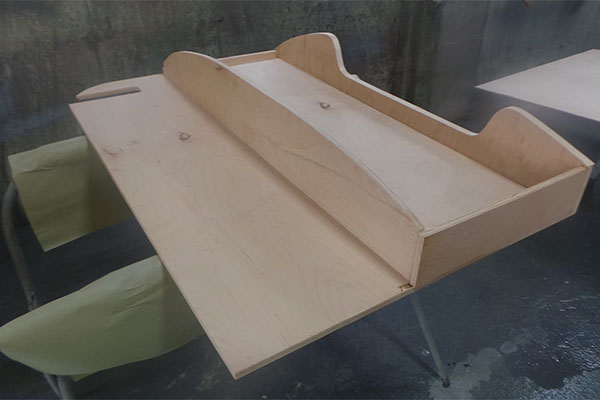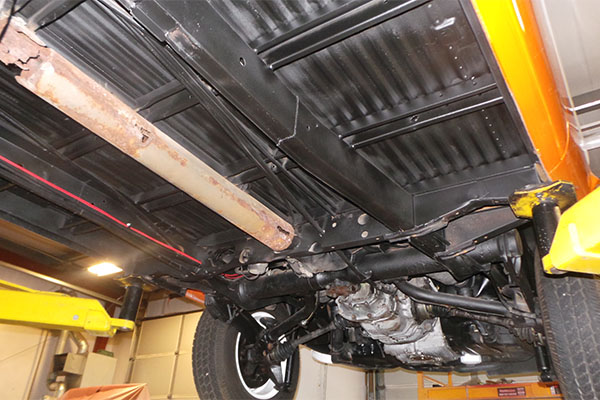
| 1.7 liter air cooled flat engine | Two tone paint | Reupholstered interior |
| New refrigerator | Sink | New cabinetry |
| 66 horsepower |
Somewhere in the middle of a regular van and a full on camper, these VWs were tiny houses on wheels. With features like stoves, refrigerators, beds, privacy curtains, swivel seats, sinks and electrical hookups these conversions were ready for camping for a week or more with the right preparations. While ideal when parked, the lack luster 1.7 liter air cooled flat four was less than ideal for getting to your destination. With a mere 66 horsepower when new and a zero to sixty time of eventually the van was not designed for the highway. However, the 1.7 liter was actually a step up from previous models that couldn’t even make sixty miles an hour. Nevertheless, the bare bones simplistic boxer engine would always get you there it just wouldn’t be in a hurry. Afterall, half the adventure is getting there!
This Volkswagen came to us all the way from Utah where most vehicles don’t rust however, forty-five years in any climate is rough on a vehicle! The VW had numerous sections of rust and rot that would need great amounts of attention from front to back. The worst of it would be in the rocker panels and rear corners both common in vintage buses. With the popularity of these vehicles, premade patch panels are plentiful and would help get the bus back into its proper hole free shape. Another common problem across all air cooled Volkswagens is heat for the passenger’s compartment. Since air cooled engines lack antifreeze they don’t have traditional heating systems, so heat is taken from the surface of the motor then to piped up to the front of the vehicle. With that being said, there is a flaw to this system, the piping runs underneath the vehicle and is very prone to rust which was exactly the case with our featured bus. Once rust takes over, all the heat gathered escapes outside instead of into the cab, so some fabrication was needed to remake the piping and get the heat working again. With the body work now squared away it was time for paint. The original VW bright orange was long since faded but still a desirable color, so the bus was repainted orange but with the optional pastel white two tone color scheme. The fiberglass top would then be reworked and repainted inside and out. With the exterior taken care of the interior would be put back to an original style with all the cabinetry and flooring being completely remade from scratch. This project was a little different from the normal restoration work most cars receive. With traditional body work came custom wood working, custom flooring and household plumbing.
To finish off the build, the VW was shipped back home to Utah and hand delivered to the excited owners by our staff.


